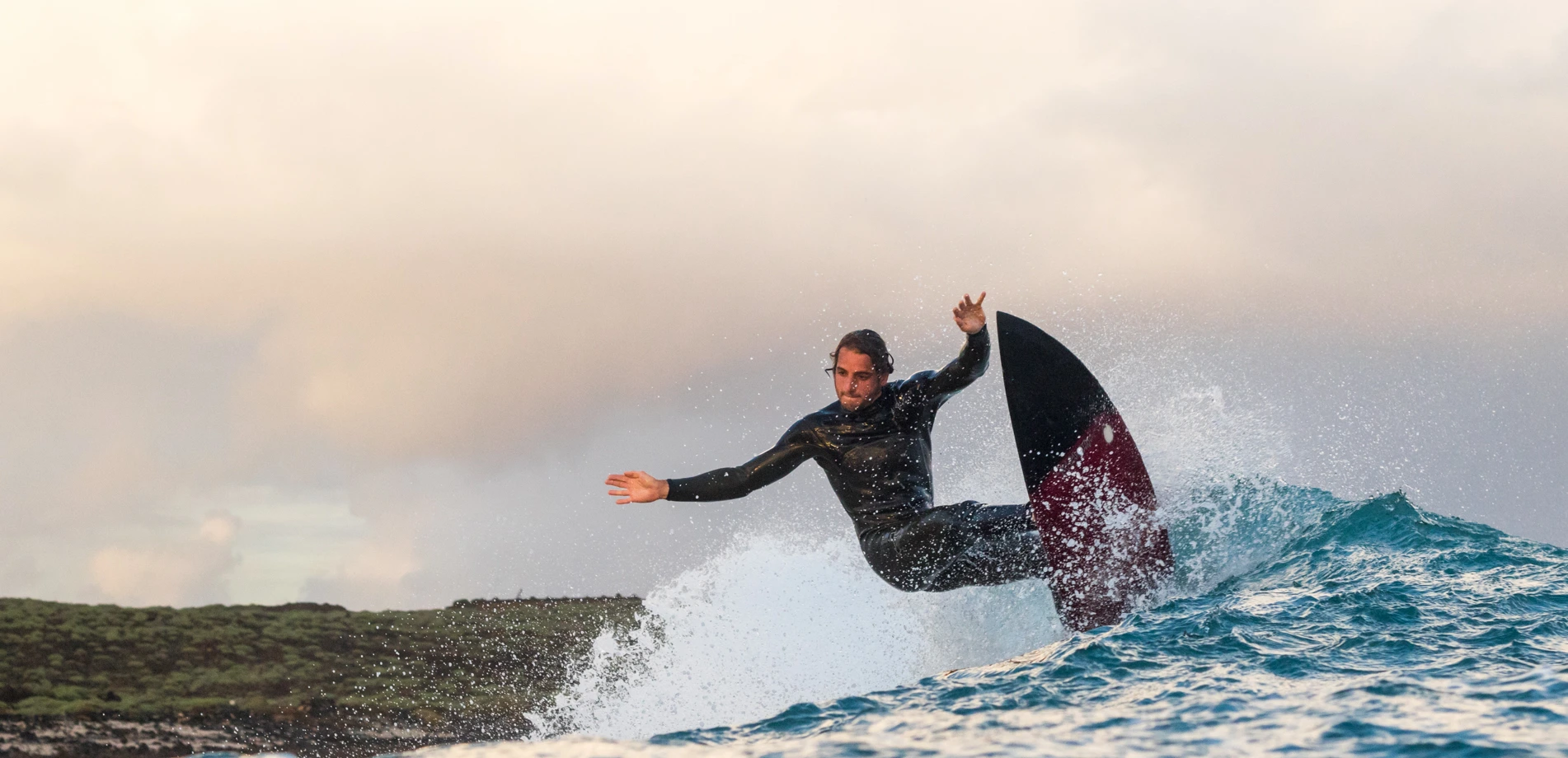


The essential tool for surfing, available in different sizes and shapes to match the surfer’s level, sea conditions, and personal preference. Boards are highly personal and come with many characteristics.
Most boards are made from polyester resin or epoxy. There are also foam‑covered softboards.
A mathematical formula using these three measures gives the board’s total volume in litres, which tells you how much space it occupies.
Boards vary widely by shape and size. Any change such as different volume distribution or rocker—can make two boards of the same model and size perform very differently.
Fins play a major role in performance, strongly affecting manoeuvrability and stability on the wave.
A cord attached to your ankle or calf (depending on board type) that keeps the board close to you, preventing it from drifting away after a wipe‑out or when you need to let go.
The leash model and length depend on the waves you surf and your board’s size.
Leash length relates to board length. Thickness depends on the board’s volume and the size of the waves. Length is usually measured in feet (ft) and thickness in millimetres (mm).
Generally made of neoprene, it keeps body temperature stable so you can surf longer in comfort. In warm climates you may not need neoprene at all.
The suit must fit the surfer’s body. Brands usually size from XS to XXXL or numbers 10‑18. Sizing varies between manufacturers despite identical labels.
Thickness depends on climate and the surfer’s cold tolerance. The thicker the suit, the warmer it is. Thickness is measured in millimetres (mm) and suits usually use two different numbers—thicker around the core and thinner on arms and legs.
Fundamental accessories fixed to the bottom of the board. Fins stabilise the board—without them it would spin uncontrollably.
Fins are mainly made from fibreglass or durable plastic. The right choice depends on skill level and personal preference.
Boards can have 1, 2, 3, or 4 fins depending on model, wave type, and surfer weight. The most common setup is three fins (thruster).
Sizes are usually classified from XS to XL. Custom sizes exist for special or oversized fins.
Fins come with different curves and dimensions, affecting how the board glides across waves. The ideal shape depends on the board model and surfer preference.
